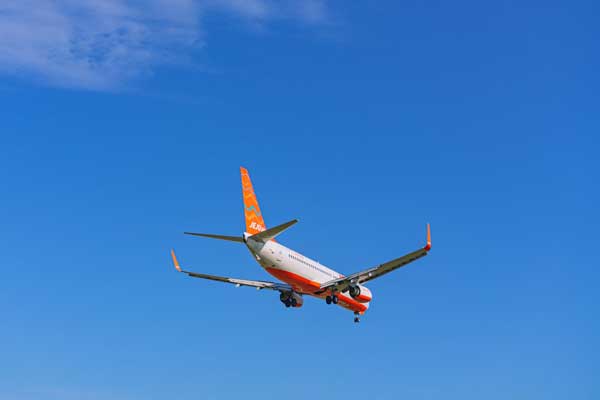Tragic plane crash takes lives of 179 in South Korea

[An image of Jeju Air’s plane Photo credit: Unsplash]
A Boeing 737-800 operated by Jeju Air crashed in Muan County, South Jeolla Province, South Korea, on December 29th, 2024, at 9 am local time.
The aircraft, arriving from Suvarnabhumi Airport in Bangkok, Thailand, was carrying 175 passengers and 6 crew members.
The collision with the concrete structure had resulted in 179 fatalities including 177 South Korean nationals and 2 Thai citizens.
Among the deceased were 82 males and 93 females with the oldest passenger born in 1946 and the youngest in 2021.
Notably, a family group of nine members, including the three-year-old, was returning from vacation when the tragedy occurred.
Miraculously, two crew members seated at the rear of the aircraft survived the crash.
They were transported to the hospital right away, and they are known to be in stable condition despite severe injuries.
Shortly before approaching the landing runway, it was confirmed that there had been a bird strike while approaching.
The pilots immediately issued a mayday call and attempted to go-around.
During the second landing attempt, they faced complications with the landing gear deployment, forcing them to execute a belly landing - an emergency technique considered a last resort in aviation, where the aircraft lands without landing gear support.
Upon touchdown, the aircraft was not able to slow its speed and subsequently collided with a concrete structure supporting an antenna installation.
This accident was identified to be the deadliest aviation accident involving a South Korean airline since 1997 and Jeju Air’s first fatal accident in 19 years.
Aviation experts noted that while International Civil Aviation Organization (ICAO) guidelines require a minimum 300-foot safety area at runway ends, the presence of a sand-covered concrete structure emerged as a major contributing factor in the disaster’s severity.
Many officials in relation to aviation all agree that the landing execution was technically sound, but the robust concrete platform’s height and structural integrity played a crucial role in the tragic outcome.
The captain was known to be very skilled, with 6,823 hours of flight experience.
Fellow aviation professionals, including co-workers of the flight crew, have praised the pilots’ handling of the emergency with footage showing their persistent efforts to maintain control until the final impact.
Many have expressed profound grief over the loss of life, extending condolences to the bereaved families.
An extensive investigation into the disaster is currently under progress with authorities promising more details to come.

- Sojin Kim / Grade 9 Session 8
- Homestead High School

![THE HERALD STUDENT REPORTERS [US]](/assets/images/logo_student_us.png)
![THE HERALD STUDENT REPORTERS [Canada]](/assets/images/logo_student_ca.png)
